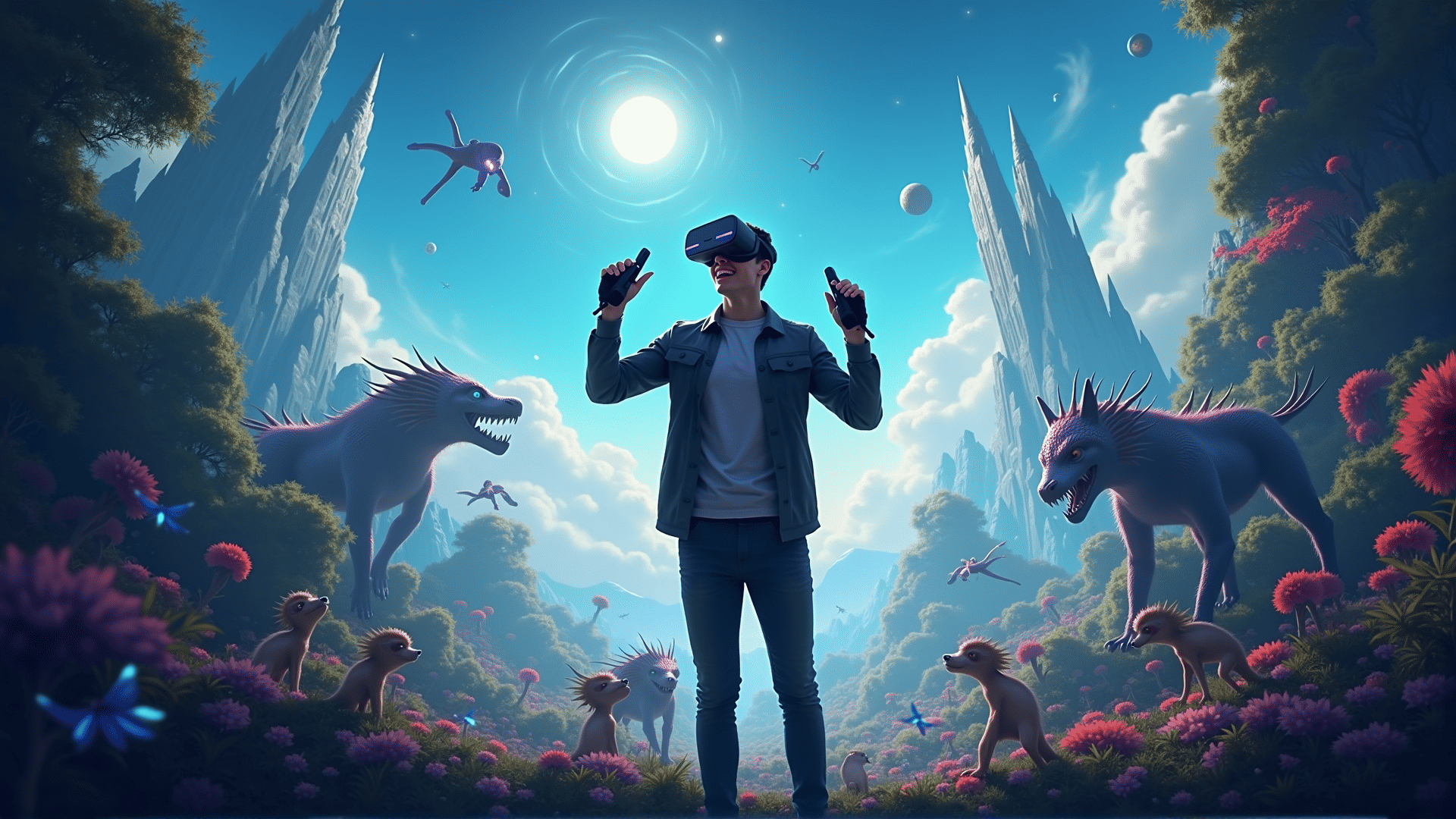In an age where technology continually redefines our cultural and entertainment landscapes, virtual reality (VR) stands at the forefront, offering experiences that transcend the boundaries of traditional gaming. This rapidly advancing medium has shifted from being a niche curiosity to a mainstream phenomenon, enabling players to dive into fully immersive worlds where the line between reality and fantasy blurs.
The heart of virtual reality's allure lies in its ability to transport users to realms crafted from pixels and code, yet rich with detail and interactivity. Unlike conventional gaming, where the action unfolds on a screen before us, VR places us directly within the game's universe. With a headset donned and controllers in hand, players are not just observers but active participants in a world brimming with possibilities.
One of the most striking aspects of these virtual realms is their ability to evoke genuine emotional responses. Whether it's the spine-tingling tension in a horror VR game or the sheer awe of exploring a breathtaking fantasy landscape, the immersive nature of VR heightens our emotional engagement. These experiences often feel remarkably real, prompting genuine fear, excitement, or wonder that traditional gaming formats struggle to replicate.
Moreover, VR has opened up new avenues for storytelling within games. Developers are no longer restricted by the confines of a flat screen and can experiment with nonlinear narratives and environments that adapt to the player's choices. This level of interactivity not only enhances engagement but also makes every player's experience unique. In a virtual reality realm, your decisions shape the world around you, offering a level of agency and immersion unheard of in classic gaming.
The technology driving VR is also advancing at an impressive rate. Headsets are becoming more affordable and accessible, while improvements in graphics, haptics, and sensory feedback continue to enhance the authenticity of virtual experiences. As a result, the once bulky and expensive equipment is now more streamlined and user-friendly, inviting a broader audience to explore these digital landscapes.
However, virtual reality is not just transforming entertainment; it is also redefining social interactions. Through multiplayer VR games and virtual spaces, users can connect with others globally, sharing experiences in immersive environments. These encounters foster genuine social connections, allowing for cooperative gameplay, competitive challenges, or simply hanging out in virtual lounges.
While there are many merits to virtual reality, it is also important to acknowledge its challenges. Concerns about motion sickness, the need for physical space, and the potential for over-immersion pose hurdles that developers are actively addressing. Advances in technology are continually mitigating these issues, but they remain considerations for users and creators alike.
As we look to the future, the potential for virtual reality realms is boundless. From education and training simulations to therapeutic applications, VR's reach promises to extend far beyond gaming, impacting various sectors and aspects of our lives. Each virtual world offers a new domain to explore, a new narrative to experience, and a new perspective to gain.
Ultimately, virtual reality represents a significant leap forward in how we engage with digital content. It challenges our perceptions, ignites our imaginations, and offers a glimpse into a future where the boundaries between the real and the virtual continue to merge, inviting us into unexplored territories where anything is possible.
